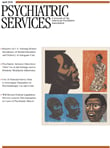Mental Health Aspects of Women's Reproductive Health: A Global Review of the Literature
Women's reproductive lives around the world include menstruation, all kinds of sexual activity, pregnancy and childbirth—or infertility—and menopause. Those lives may also include genital mutilation, child marriage, rape, coerced abortion of female embryos, and, in some areas of the United States, prosecution and incarceration for behaviors, such as illicit drug use, considered deleterious to the fetus. In some Western countries, some normal female reproductive events have been medicalized, that is to say pathologized, for generations. Episiotomies and so-called replacement hormones became standard practice without any evidence that they improve outcomes. In other parts of the world, reproductive pathology is not addressed, leading to large numbers of maternal deaths.
Women's reproductive health and health care are more subject to psychosocial and political forces than most other areas of health and health care. In most other areas of medicine, health does not hinge on the kind of education and access required for the successful use of contraception or on the political forces that result in barriers to abortion services. No other area of medicine involves the growth of one potential human being inside the body of another. These realities result in complex and intense interplay among anatomy, physiology, emotions, and cognition.
Given the size of the field, the book packs an extraordinary amount of accurate, useful, thoughtful, and thought-provoking information into its 170 pages. It provides the full-scale global perspective seldom found in our reference texts. As the subtitle indicates, each chapter—on pregnancy, childbirth, and the postpartum period and fertility regulation, spontaneous pregnancy loss, menopause, gynecological conditions, HIV-AIDS, infertility, and female genital mutilation—is a separate review of the world literature. Some of the chapters include references to publications only up to 2003, and others include references that extend as far as 2007. One paragraph read at random illustrates the depth and breadth of coverage: one learns that "on average 20% of couples conceive at each embryo transfer cycle" and that there is debate about whether infertility is a bona fide medical condition, whether the time and energy patients spend on interventions with a small chance of success could be better invested in finding other forms of fulfillment, and whether some women feel coerced into continuing treatment when they would prefer to stop.
Half the world's population—and, in some parts of the world, more than half the number of psychiatric patients—is female. Therefore, every mental health student, teacher, researcher, and clinician should be informed about "the mental health aspects of women's reproductive health." That is the very appropriate title of this excellent book.
The reviewer reports no competing interests.



